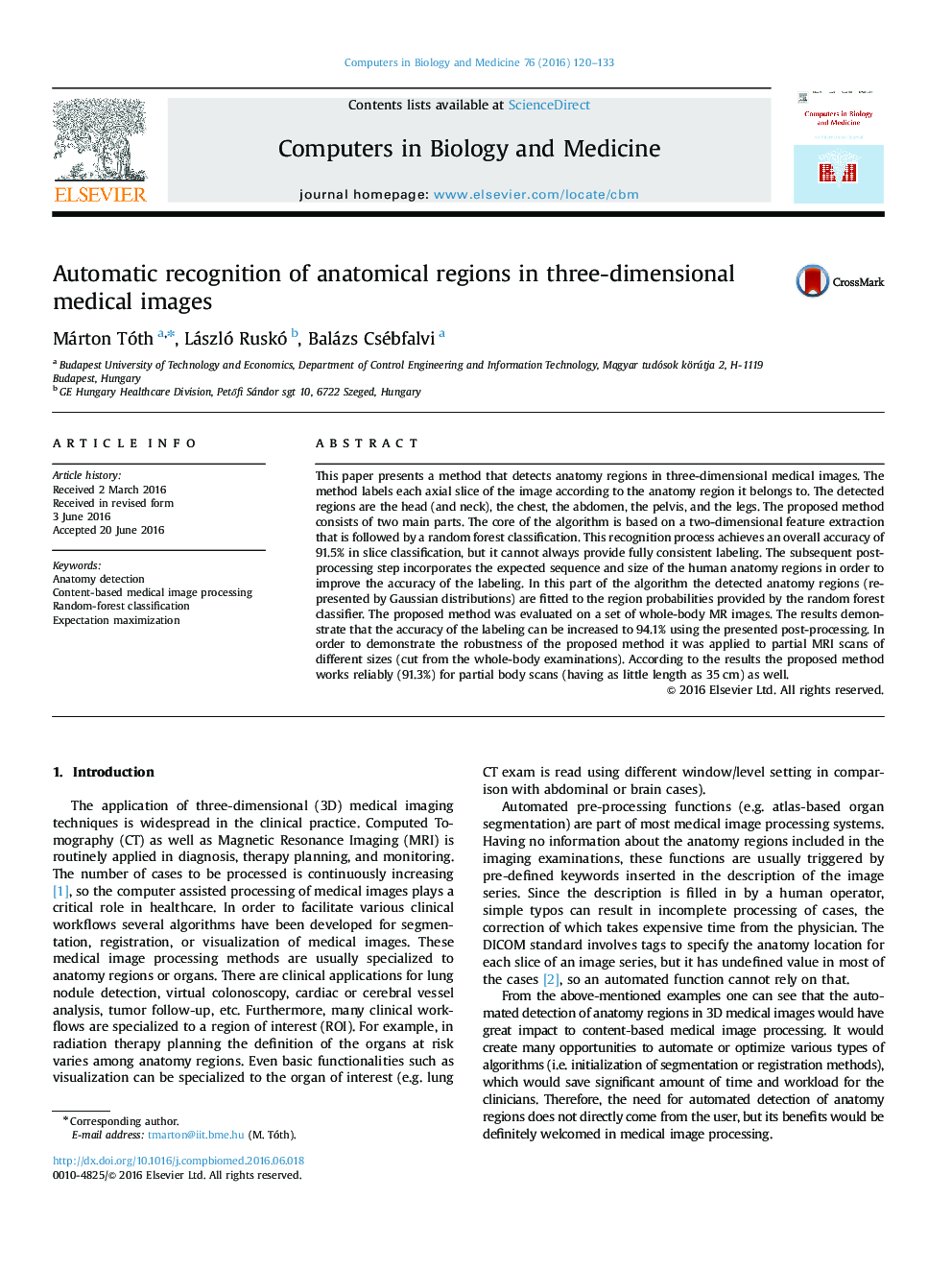| کد مقاله | کد نشریه | سال انتشار | مقاله انگلیسی | نسخه تمام متن |
|---|---|---|---|---|
| 504771 | 864429 | 2016 | 14 صفحه PDF | دانلود رایگان |
• A novel method is presented to recognize the main anatomical regions in 3D medical exams.
• Standard image processing techniques and machine learning tools are applied to obtain an initial slice-by-slice classification.
• The post-processing part of the method incorporates the expected order and size of anatomy regions to eliminate false classifications.
• The proposed method was evaluated for whole-body (torso) as well as partial body MRI exams and proved reliable
This paper presents a method that detects anatomy regions in three-dimensional medical images. The method labels each axial slice of the image according to the anatomy region it belongs to. The detected regions are the head (and neck), the chest, the abdomen, the pelvis, and the legs. The proposed method consists of two main parts. The core of the algorithm is based on a two-dimensional feature extraction that is followed by a random forest classification. This recognition process achieves an overall accuracy of 91.5% in slice classification, but it cannot always provide fully consistent labeling. The subsequent post-processing step incorporates the expected sequence and size of the human anatomy regions in order to improve the accuracy of the labeling. In this part of the algorithm the detected anatomy regions (represented by Gaussian distributions) are fitted to the region probabilities provided by the random forest classifier. The proposed method was evaluated on a set of whole-body MR images. The results demonstrate that the accuracy of the labeling can be increased to 94.1% using the presented post-processing. In order to demonstrate the robustness of the proposed method it was applied to partial MRI scans of different sizes (cut from the whole-body examinations). According to the results the proposed method works reliably (91.3%) for partial body scans (having as little length as 35 cm) as well.
Figure optionsDownload high-quality image (236 K)Download as PowerPoint slide
Journal: Computers in Biology and Medicine - Volume 76, 1 September 2016, Pages 120–133
